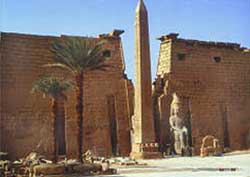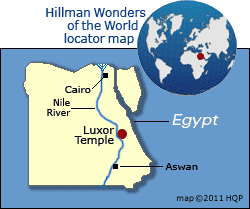Luxor Temple
 Why
Luxor Temple
is special
Why
Luxor Temple
is specialIt is noted for its massiveness, historical importance, and well-preserved soaring columns.
Top 5 Luxor Temple attractions
- Entrance Pylon
Two jumbo Rameses II statues stand in front of this imposing gateway, as does a lofty obelisk.
- Courtyards
The Inner and the Rameses II courtyards are enclosed by majestic columns.
- Colonnade
This processional path links the two courtyards and is impressively flanked by seven giant columns on either side.
- Hyperstyle
32 towering, tightly spaced columns create an awesome scene.
- Inner Sanctum
Small shrines and chapels are packed into the far end of Luxor Temple.
More Luxor Temple tips and insights
History in brief
In the 14th century BC, mighty Amenhotep III built a new Luxor Temple over an existing religious structure.
Additions were subsequently made by others, including Alexander the Great.
But it was Rameses II in the 13th century BC who commissioned the greatest changes: The Entrance Pylon and his courtyard.
Eventually Father Time buried the temple and town folk constructed buildings over the hidden wonder. Archaeological excavations began in the early 19th century.
Pointers
- Explore this wonder both during the day and at night (when the ruins and reliefs are floodlit).
- Come in early morning or late afternoon to mitigate the crowd factor and (in summer) the scorching sun.



